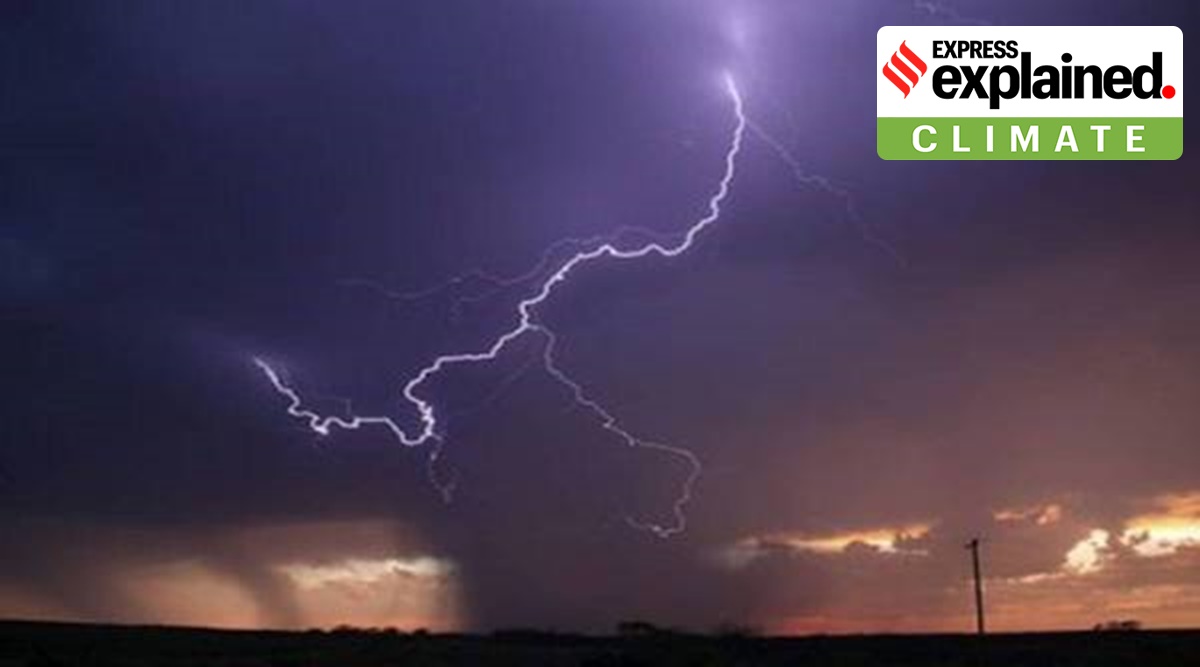At least 30 people were killed in separate incidents of lightning in various parts of the country in the past 24 hours. While Rajasthan reported 18 deaths, Uttar Pradesh recorded 12. Causalities have also been reported from Madhya Pradesh. Earlier in June, 20 persons were killed in lightning strikes in three districts of south Bengal.
Deaths due to lightning have become frequent in the country. In July last year, 40 people were killed by lightning in Bihar in two separate incidents.
So, why — and how frequently — does lightning kill in India?
How common are deaths by lightning?
More common than is sometimes realised in the urban areas. As a whole, India sees 2,000-2,500 lightning deaths every year on average. Lightning is the biggest contributor to accidental deaths due to natural causes. A few years ago, over 300 people were reported killed by lightning in just three days — a number that surprised officials and scientists.
And yet, lightning remains among the least studied atmospheric phenomena in the country. Just one group of scientists, at the Indian Institute of Tropical Management (IITM) in Pune, works full-time on thunderstorms and lightning.
Occurrences of lightning are not tracked in India, and there is simply not enough data for scientists to work with. Often, safety measures and precautions against lightning strikes do not receive as much publicity as other natural disasters such as earthquakes.
Several thousand thunderstorms occur over India every year. Each can involve several — sometimes more than a hundred — lightning strikes. Dr Sunil Pawar of IITM says incidents of lightning have been showing an increasing trend over the last 20 years, especially near the Himalayan foothills.
Newsletter | Click to get the day’s best explainers in your inbox
What is lightning, and how does it strike?
Lightning is a very rapid — and massive — discharge of electricity in the atmosphere, some of which is directed towards the Earth’s surface. These discharges are generated in giant moisture-bearing clouds that are 10-12 km tall. The base of these clouds typically lies within 1-2 km of the Earth’s surface, while their top is 12-13 km away. Temperatures towards the top of these clouds are in the range of minus 35 to minus 45 degrees Celsius.
As water vapour moves upward in the cloud, the falling temperature causes it to condense. Heat is generated in the process, which pushes the molecules of water further up.
As they move to temperatures below zero degrees celsius, the water droplets change into small ice crystals. They continue to move up, gathering mass — until they are so heavy that they start to fall to Earth.
This leads to a system in which, simultaneously, smaller ice crystals are moving up and bigger crystals are coming down.
Collisions follow, and trigger the release of electrons — a process that is very similar to the generation of sparks of electricity. As the moving free electrons cause more collisions and more electrons, a chain reaction ensues.
This process results in a situation in which the top layer of the cloud gets positively charged, while the middle layer is negatively charged. The electrical potential difference between the two layers is huge — of the order of a billion to 10 billion volts. In very little time, a massive current, of the order of 100,000 to a million amperes, starts to flow between the layers.
An enormous amount of heat is produced, and this leads to the heating of the air column between the two layers of the cloud. This heat gives the air column a reddish appearance during lightning. As the heated air column expands, it produces shock waves that result in thunder.
How does this current reach the Earth from the cloud?
While the Earth is a good conductor of electricity, it is electrically neutral. However, in comparison to the middle layer of the cloud, it becomes positively charged. As a result, about 15%-20% of the current gets directed towards the Earth as well. It is this flow of current that results in damage to life and property on Earth.
There is a greater probability of lightning striking tall objects such as trees, towers or buildings. Once it is about 80-100 m from the surface, lightning tends to change course towards these taller objects. This happens because air is a poor conductor of electricity, and electrons that are travelling through air seek both a better conductor and the shortest route to the relatively positively charged Earth’s surface.

टिप्पणियाँ
एक टिप्पणी भेजें